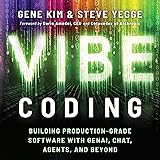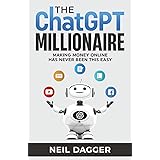I recently needed a reliable way to download transcripts from YouTube videos using Python. I was looking for a straightforward solution that wouldn’t require a complex setup or extensive third-party libraries. After exploring a few options, I decided to share my experience with a simple Python script that leverages the youtube-transcript-api package. In this post, I will walk you through the process step by step, explaining the code and the logic behind it so that you can adapt it for your own projects.
Thank me by sharing on Twitter 🙏
I began by considering the common requirements when working with YouTube transcripts. I wanted a script that accepts a YouTube URL as a parameter, extracts the video ID, and then retrieves the transcript. I also needed to handle different URL formats. For instance, YouTube supports both the standard URL with query parameters and the shortened URL. The solution I came up with is both flexible and easy to understand.
Step 1: Setting Up the Environment
First, I installed the youtube-transcript-api package using pip. This library simplifies the process of fetching transcripts from YouTube videos. You can install it by running:
pip install youtube-transcript-apiAfter installing the package, I started setting up my Python script. I made sure that my development environment was configured properly to execute Python scripts and handle command-line arguments.
Step 2: Extracting the Video ID
The first major component of the script is the extraction of the video ID from the provided URL. I knew that YouTube URLs can come in various formats, so I used regular expressions to match both the standard and shortened URL formats. Here’s the function I wrote for that purpose:
Vibe Coding: Building Production-Grade Software with GenAI, Chat, Agents, and Beyond
$21.83 (as of October 17, 2025 18:05 GMT +00:00 - More infoProduct prices and availability are accurate as of the date/time indicated and are subject to change. Any price and availability information displayed on [relevant Amazon Site(s), as applicable] at the time of purchase will apply to the purchase of this product.)Start with Why: How Great Leaders Inspire Everyone to Take Action
$12.49 (as of October 17, 2025 18:05 GMT +00:00 - More infoProduct prices and availability are accurate as of the date/time indicated and are subject to change. Any price and availability information displayed on [relevant Amazon Site(s), as applicable] at the time of purchase will apply to the purchase of this product.)The ChatGPT Millionaire: Making Money Online has never been this EASY (AI Wealth Engine)
$12.95 (as of October 17, 2025 18:05 GMT +00:00 - More infoProduct prices and availability are accurate as of the date/time indicated and are subject to change. Any price and availability information displayed on [relevant Amazon Site(s), as applicable] at the time of purchase will apply to the purchase of this product.)import re
def extract_video_id(url):
"""
Extract the video ID from a YouTube URL.
Handles URLs like:
- https://www.youtube.com/watch?v=VIDEO_ID
- https://youtu.be/VIDEO_ID
"""
# Pattern for full YouTube URL
match = re.search(r"(?:v=)([^&#]+)", url)
if match:
return match.group(1)
# Pattern for shortened URL
match = re.search(r"(?:youtu\.be/)([^&#]+)", url)
if match:
return match.group(1)
return None
This function is simple yet effective. It uses two regular expressions to ensure that I can handle both formats. The first expression checks for the query parameter v=, while the second one deals with the shorter URL format. By doing so, I ensured that the script could extract the video ID regardless of how the URL is structured.
Step 3: Downloading the Transcript
After obtaining the video ID, the next step was to download the transcript. I encapsulated this functionality in another function that takes the video URL as input, extracts the video ID, and then calls the get_transcript method from the youtube-transcript-api library. Here’s how I implemented it:
from youtube_transcript_api import YouTubeTranscriptApi
def download_transcript(url):
video_id = extract_video_id(url)
if not video_id:
print("Error: Could not extract video ID from the URL provided.")
return
try:
transcript = YouTubeTranscriptApi.get_transcript(video_id)
except Exception as e:
print(f"Error: Could not download transcript. Details: {e}")
return
# Print the transcript text line by line
for entry in transcript:
print(entry["text"])
In this function, I first validate that a video ID is successfully extracted. If not, an error message is printed. Next, I call YouTubeTranscriptApi.get_transcript with the video ID. If an exception occurs—perhaps due to a transcript not being available or some network issue—I catch it and print an error message with the details. Finally, I iterate over the transcript entries and print each line of text. This approach is both direct and effective.
Step 4: Handling Command-Line Arguments
To make the script user-friendly, I wanted it to accept a YouTube video URL from the command line. I achieved this using Python’s sys module. Here’s the main section of the script:
import sys
if __name__ == "__main__":
if len(sys.argv) < 2:
print("Usage: python script.py <youtube_video_url>")
sys.exit(1)
video_url = sys.argv[1]
download_transcript(video_url)
By including this block, I ensured that when the script is executed from the command line, it checks whether the URL parameter has been provided. If not, it prints usage instructions and exits. Otherwise, it proceeds to download and print the transcript.
A Few Considerations
While the script is relatively simple, there are several points worth noting:
- Error Handling: I included basic error handling to manage cases where the video ID extraction might fail or the transcript might not be available. This ensures that the script fails gracefully and informs the user about the issue.
- Modularity: I structured the script into functions, making it easier to maintain and extend. For instance, if you wish to save the transcript to a file rather than printing it, you can modify the
download_transcriptfunction accordingly. - Dependencies: I opted for a well-supported library that abstracts away many of the complexities involved in interacting with YouTube’s services. This allows me to focus on the functionality that matters most to my project.
Conclusion
In summary, I developed a straightforward Python script that downloads YouTube transcripts by accepting a video URL as input. The process involves extracting the video ID from various URL formats, retrieving the transcript using the youtube-transcript-api library, and printing each line of the transcript to the console. The code is modular, handles errors effectively, and serves as a solid foundation for more advanced applications. By following these steps, you can quickly integrate transcript downloading into your projects, whether for data analysis, content processing, or any other purpose that requires textual data from YouTube videos.
This approach has proven efficient in my projects, and I hope you find it equally useful.







